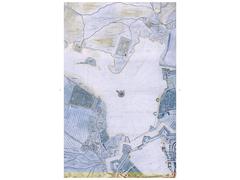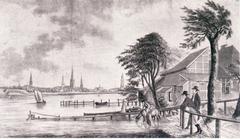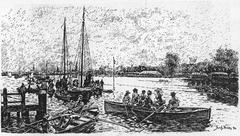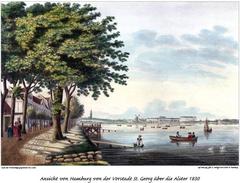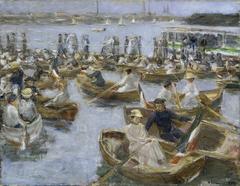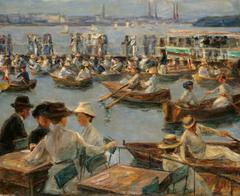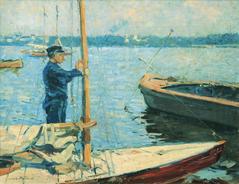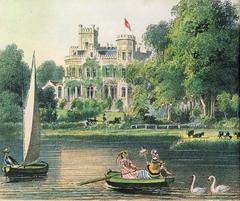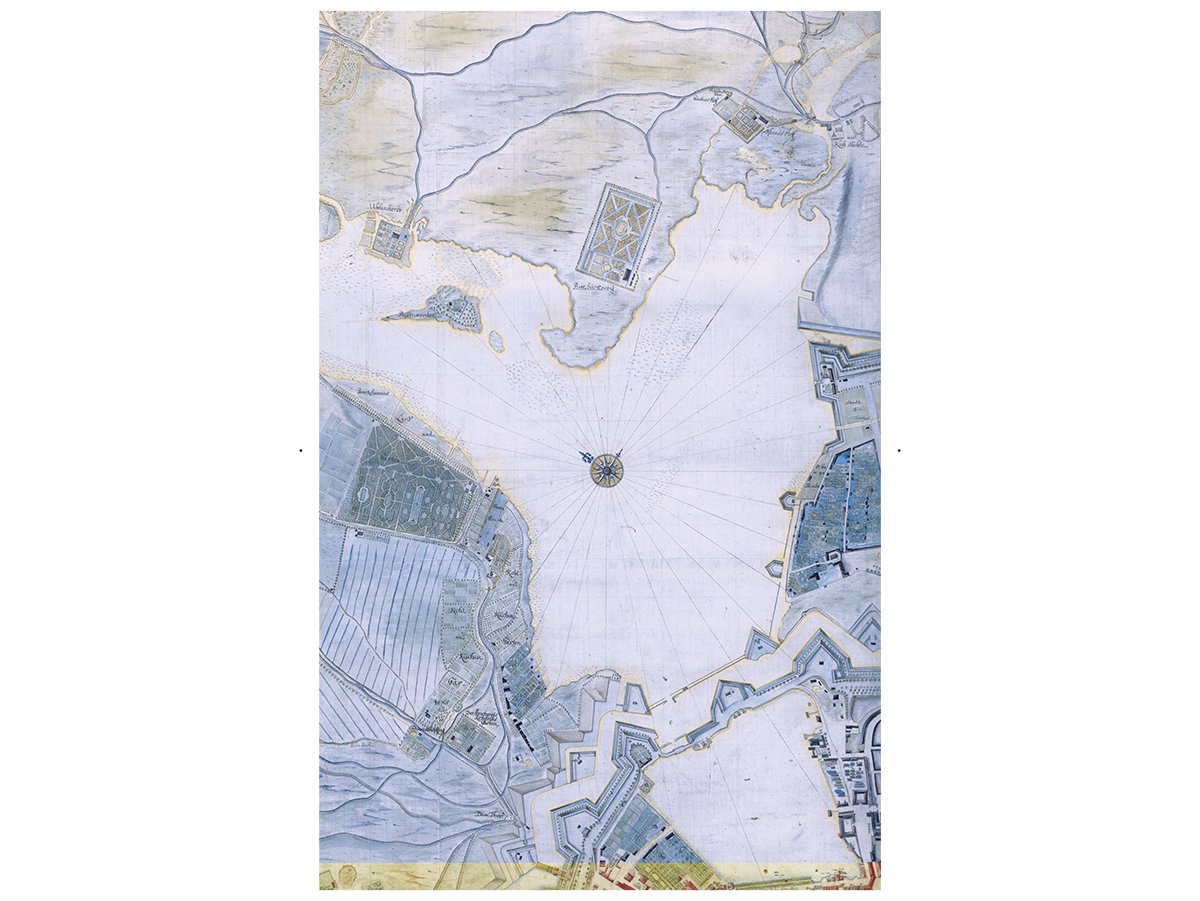
Außenalster Hamburg Visiting Hours, Tickets, and Historical Sites Guide
Date: 14/06/2025
Introduction
Situated in the vibrant heart of Hamburg, Germany, the Außenalster is a breathtaking artificial lake that showcases the city’s harmonious blend of history, culture, and natural beauty. Originally formed in the Middle Ages by damming the Alster River, the Außenalster has transformed from a utilitarian reservoir into one of Hamburg’s most treasured urban retreats. Today, this expansive 1.64-square-kilometer lake is framed by lush promenades and historic neighborhoods, inviting visitors to engage in a variety of activities—jogging, sailing, cycling, or simply enjoying the serene scenery.
This comprehensive guide details the history, urban development, key attractions, visiting hours, ticketing information, and practical tips to help you make the most of your Außenalster experience. Whether you are a history enthusiast, nature lover, or seeking leisure activities, Außenalster is a must-visit destination that captures the essence of Hamburg’s unique urban lifestyle (Wikiwand, hamburg.com, hamburg-travel.com).
Table of Contents
- Origins and Historical Evolution of Außenalster
- Urban Development and Modern Significance
- Geography, Layout, and Surrounding Districts
- Cultural Significance of Außenalster
- Visiting Außenalster: Hours, Tickets, and Tips
- Key Attractions and Activities
- FAQ
- Summary of Key Information
- Sources
Origins and Historical Evolution of Außenalster
Formation and Early History
The Außenalster, or Outer Alster Lake, came into existence during the Middle Ages as a result of damming the Alster River for water management and to power mills. The designation “Außenalster” refers to the lake portion outside the once-fortified city walls, distinguishing it from the Binnenalster (Inner Alster) inside the fortifications. In the 17th and 18th centuries, the surrounding areas were largely rural, with meadows and farmland. As Hamburg’s population increased, affluent residents built summer homes along the lake to enjoy the tranquility away from the busy city center (Wikiwand).
19th-Century Urbanization
The 19th century marked significant changes for the Außenalster. The devastating Great Fire of 1842 shifted commercial focus toward the Elbe River, making the Alster region more attractive for residential and leisure purposes. The western shore rapidly developed into a prestigious area with grand villas and tree-lined avenues, while the eastern side saw gradual urbanization. Public recreational use expanded, highlighted by the opening of public bathing establishments and lakeside guesthouses (hamburg.de PDF).
20th Century and Post-War Transformation
By the early 20th century, Außenalster was firmly established as a recreational centerpiece. The construction of the Lombardsbrücke and Kennedybrücke improved accessibility and connected the city center with northern neighborhoods. During World War II, creative (though only moderately effective) camouflage efforts were made to protect landmarks from air raids. After the war, private shoreline estates were converted into public parks, culminating in the 1953 International Garden Exhibition, which solidified Außenalster’s role as an accessible green space for all (hamburg.de PDF).
Urban Development and Modern Significance
Integration into Hamburg’s Urban Fabric
Today, Außenalster is bordered by some of Hamburg’s most desirable neighborhoods, including Harvestehude, Rotherbaum, Winterhude, Uhlenhorst, Hohenfelde, and St. Georg. The western lakeshore is famous for its stately villas, embassies, and luxury hotels, reflecting Hamburg’s historical wealth, while the eastern districts offer a denser, lively urban atmosphere. The lake itself, with an average depth of 2.5 meters, is fed by the Alster, Osterbek, and Wandse rivers (Wikiwand).
Green Spaces and Sustainable Urban Planning
Hamburg is renowned for its commitment to sustainability, with the Außenalster at the heart of its green city strategy. Once-privately held gardens along the lake have been converted to public parks, providing vast recreational areas. These parks help mitigate urban heat and promote biodiversity, supporting Hamburg’s goal of being a “green and environment-friendly city” (hamburg.com).
Social and Recreational Role
Außenalster remains a hub for sports, leisure, and social life. Its shores are home to historic sailing and rowing clubs, including Der Hamburger und Germania Ruder Club (founded 1836) and Norddeutscher Regatta Verein (1868). The water quality is excellent, although swimming is discouraged due to boat traffic. The lake’s parks and promenades are popular for jogging, cycling, picnics, and cultural festivities, serving as a social center for Hamburg’s urban population (Wikiwand).
Architectural and Urban Identity
The area around Außenalster is a showcase of Hamburg’s architectural evolution. Western shores feature elegant townhouses, embassies, and luxury hotels like the Hotel Atlantic, while the east offers lively neighborhoods with a mix of residential, commercial, and cultural spaces. The iconic Lombardsbrücke and Kennedybrücke bridges are both practical transport links and scenic vantage points (Wikiwand).
Geography, Layout, and Surrounding Districts
Physical Geography
The Außenalster covers roughly 164 hectares (1.64 km²), stretching about 2.8 kilometers north to south and 1 kilometer east to west. Its perimeter path is approximately 7.4 kilometers, making it perfect for outdoor activities (germanytravel.blog). The lake’s shallow waters are surrounded by lush parks and tree-lined promenades, offering a peaceful retreat within the city.
Layout and Urban Integration
The lake is seamlessly woven into Hamburg’s urban fabric, encircled by public parks and promenades. Notable green spaces include Alsterpark (west) and Schwanenwik Park (east). The southern tip, marked by the Lombardsbrücke and Kennedybrücke, connects the Außenalster to the Binnenalster and the city center (wideworldtrips.com).
Surrounding Districts
- Harvestehude & Rotherbaum (West): Grand 19th-century mansions, embassies, and exclusive rowing clubs.
- Winterhude (North): Café culture, boutique shopping, near Stadtpark.
- Uhlenhorst & Hohenfelde (East): Elegant villas, leafy streets, cultural venues.
- St. Georg (South-East): Multicultural, lively nightlife, close to Hamburg Central Station.
Cultural Significance of Außenalster
Historical and Social Importance
The Außenalster is deeply entwined with Hamburg’s cultural identity. Created in the 13th century, it evolved from a utilitarian reservoir to a symbol of civic pride. The transformation of private gardens into public parks after the demolition of city walls in 1804 made the Außenalster an inclusive space, reflecting Hamburg’s social diversity (hiiker.app, wikipedia).
Festivals and Community Life
The lake is a focal point for major community events. The annual Kirschblütenfest (Cherry Blossom Festival) celebrates Japanese-German friendship with fireworks and cultural performances. During rare cold winters, the Alstereisvergnügen festival transforms the frozen lake into a vast ice-skating rink. The return of the Alsterschwäne (Alster swans) each spring is another cherished tradition (hamburg.com, wikipedia).
Recreation and Everyday Life
The 7.4-kilometer perimeter path is a magnet for joggers, cyclists, and walkers. Parks like Alsterpark and Alstervorland host picnics, grilling, and sunbathing, especially in summer (komoot.com). The Außenalster is accessible and central, frequented by people from all walks of life.
Visiting Außenalster: Hours, Tickets, and Tips
Visiting Hours and Accessibility
- Public Access: Open 24/7, year-round; free entry.
- Best Times to Visit: Daylight hours in spring/summer for vibrant parks and water sports; winter for tranquil scenery.
- Accessibility: Wheelchair-accessible paths; public transport access via U-Bahn and bus stops.
Tickets and Entry
- General Access: Free.
- Boat Rentals/Events: Fees apply; check with individual providers.
Practical Tips
- Walking & Cycling: Bring comfortable shoes or rent a bike.
- Boat Tours: Available from Jungfernstieg; no license required for most rentals.
- Nearby Attractions: Hamburger Kunsthalle, Speicherstadt, Planten un Blomen park.
- Dining: Lakeside cafés such as AlsterCliff and ALEX Hamburg Alsterpavillon provide scenic meals (hamburg-travel.com).
Key Attractions and Activities
Outdoor Activities
- Jogging, Walking, Cycling: The 7.4-kilometer loop is ideal for fitness and sightseeing (hamburg-travel.com).
- Water Sports: Sailing, rowing, canoeing, and paddle boating are popular; equipment rental is widely available (trek.zone).
- Boat Tours: Alster steamers offer guided cruises with panoramic city views.
Parks and Green Spaces
- Alsterpark & Alstervorland: Expansive lawns, gardens, and cultural events.
- Schwanenwik Park: Ideal for sunset picnics.
Art, Culture, and Events
- Museums: Hamburger Kunsthalle, Museum of Ethnology.
- Festivals: Alstervergnügen, Kirschblütenfest, SportScheck RUN Hamburg (sportscheck.com).
- Public Art: Sculptures and installations throughout the parks.
Culinary Highlights
- Cafés and Restaurants: Numerous options with lakeside views.
- Shopping: Boutiques in Winterhude and Uhlenhorst; Jungfernstieg promenade for upscale shopping (thecrazytourist.com).
FAQ
Q: What are Außenalster visiting hours?
A: Open 24/7, year-round; free to access.
Q: Are tickets required?
A: No tickets needed for general access; some activities (boat tours, clubs) may charge fees.
Q: Is the Außenalster accessible for wheelchairs?
A: Yes, the paths are generally flat and wheelchair-friendly.
Q: Can I swim in Außenalster?
A: Swimming is discouraged due to boat traffic and visibility.
Q: Are guided tours available?
A: Yes, both walking and boat tours are available from local operators.
Q: How do I get there?
A: Easily accessible via Hamburg public transport; Jungfernstieg station is a main hub.
Summary of Key Information
- Surface Area: 1.64 km² (164 hectares)
- Average Depth: 2.5 meters
- Perimeter Path: 7.4 kilometers
- Districts: Harvestehude, Rotherbaum, Winterhude, Uhlenhorst, Hohenfelde, St. Georg
- Best Times to Visit: Spring through autumn for outdoor activities and festivals
- Accessibility: Wheelchair-friendly, excellent public transport links
- Cultural Events: Kirschblütenfest, Alstervergnügen, SportScheck RUN Hamburg
- Recreation: Jogging, cycling, sailing, rowing, picnics, photography
Sources
- Wikiwand – Außenalster
- Hamburg Urban Planning and Development Strategies – hamburg.com
- Germany Travel Blog – Things to Do in Hamburg
- Wikipedia – Außenalster
- Hamburg Travel – Parks and Green Spaces Außenalster
- Hamburg Travel – Around the Alster
- Komoot – Außenalster Loop
- Trek Zone – Außenalster Hamburg
- Hiiker – Außenalster Loop Trail
- The Crazy Tourist – Best Things to Do in Hamburg
- Sportscheck – RUN Hamburg
- Hamburg Insider Blog – Alsterspaziergang
- Secret Hamburg – Things to Do in June
